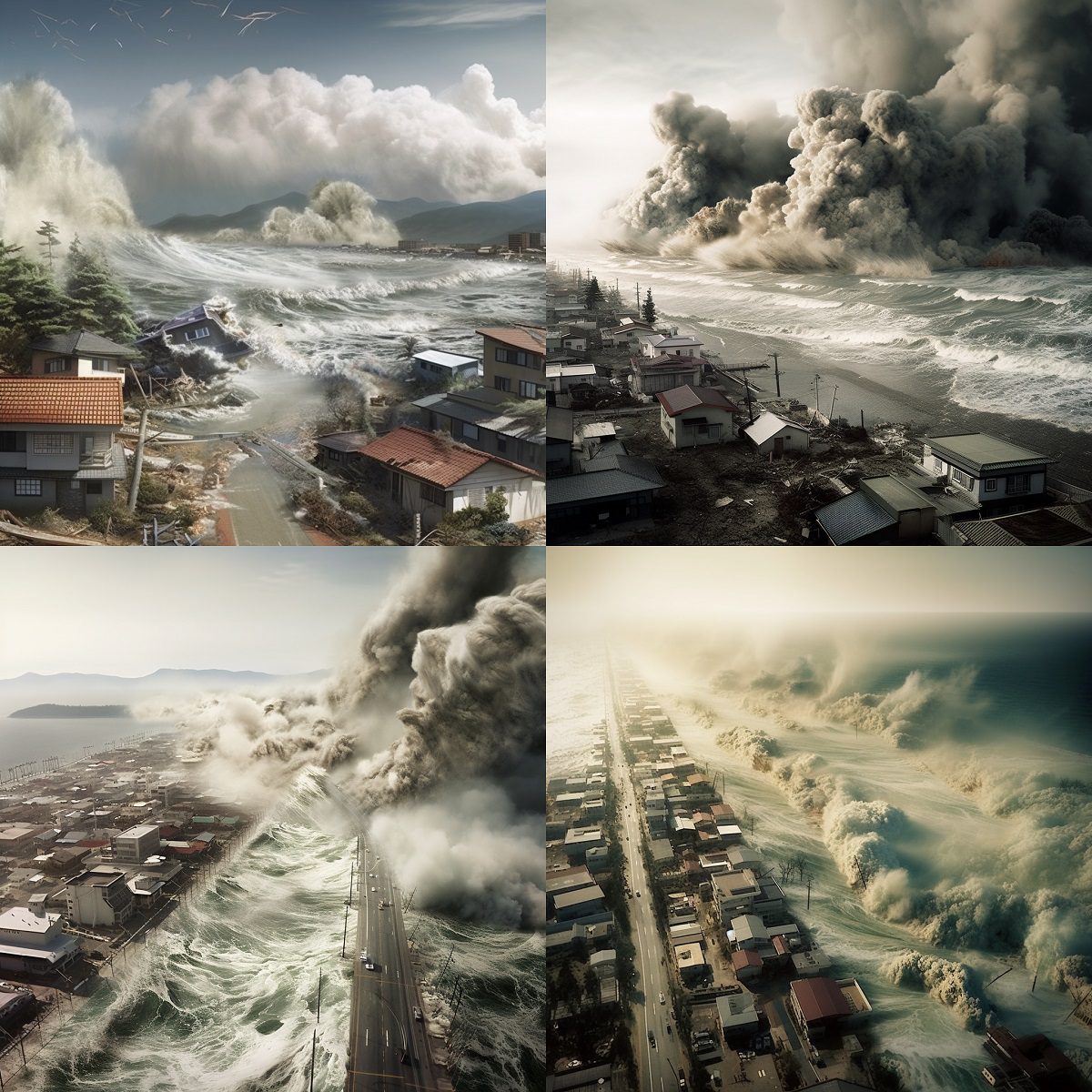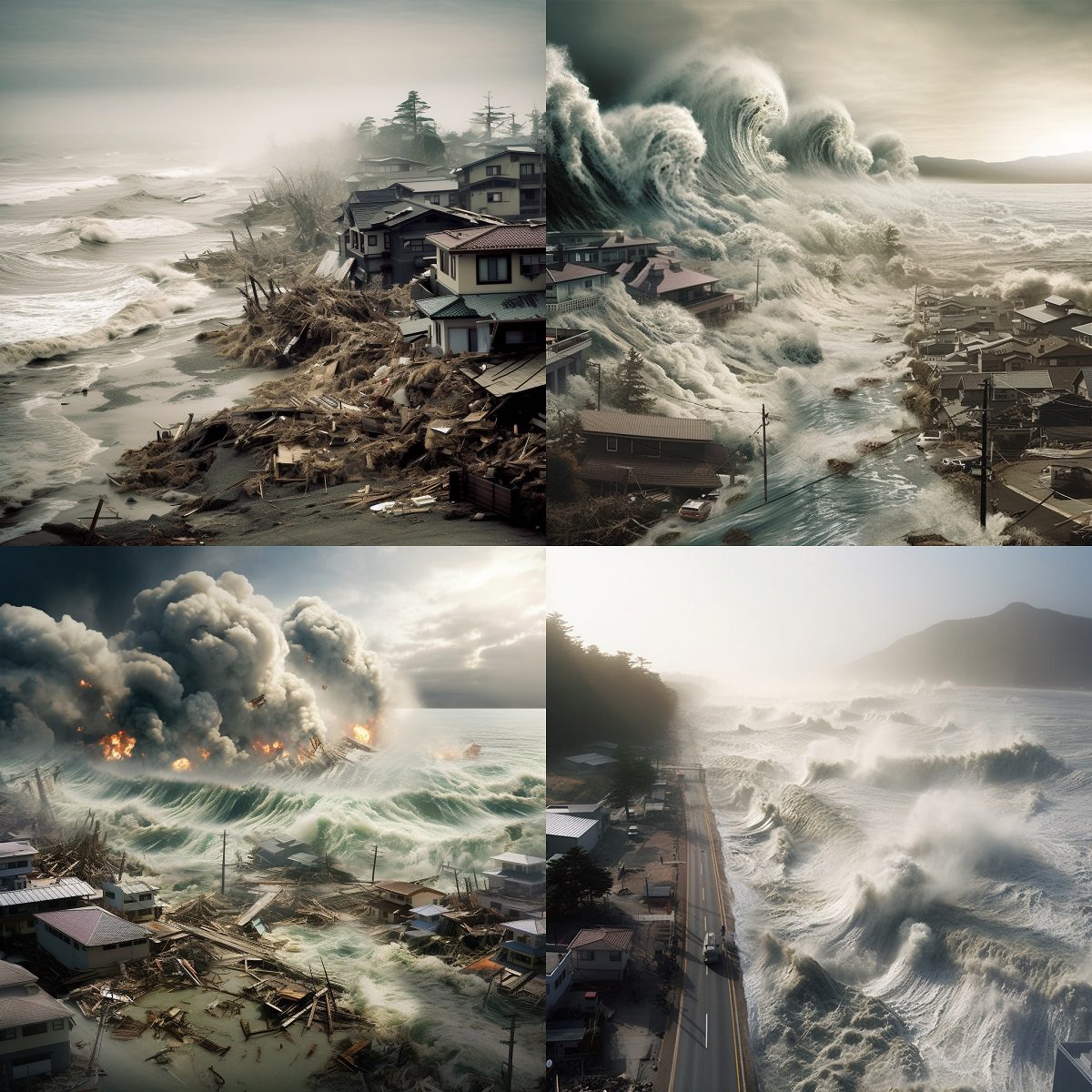
The 2011 Japan Tsunami was a devastating event, leaving an unforgettable impression on the nation’s history and providing invaluable insights into tsunami science. This blog post will delve deeper into various aspects of this devastating natural disaster and explore how it has influenced our understanding of seismic events.
Firstly, the aftermath of this quake on Japan’s infrastructure and its impacts on those living in the area will be considered. This includes their recovery efforts in rebuilding their lives after such a massive calamity. Furthermore, by analyzing this particular tsunami through visualization techniques, we can gain a better comprehension of how tectonic plates pushing together cause these immense waves.
Lastly, we will discuss new technology aiding earthquake and tsunami research – from innovative methods used by scientists studying seismic events to future developments in earthquake prediction technologies. By exploring these topics related to the Japan Tsunami 2011, readers can gain valuable knowledge about both nature’s destructive power and humanity’s resilience against such challenges.
The Devastating Japan Tsunami of 2011
On March 11, 2011, a massive 9.0 earthquake struck northern Japan, causing the largest quake ever known in the country and triggering a catastrophic tsunami that left more than 28,000 people dead or missing. This rare video footage from National Geographic showcases the terrifying power of these natural disasters as they turned cities into rubble and created what can only be described as a “tsunami soup.
The Impact of the Earthquake on Japan’s Infrastructure
The immense force of this seismic event caused widespread destruction to buildings, roads, bridges, and other vital infrastructure throughout affected areas. The damage was so extensive that it led to meltdowns at three reactors in the Fukushima Daiichi Nuclear Power Plant complex – an ongoing crisis with long-lasting consequences for both human health and environmental safety.
Effects on local communities and their recovery efforts
- Economic loss: The disaster resulted in an estimated $360 billion worth of economic losses for Japan.
- Housing: More than one million homes were damaged or destroyed by either the earthquake or subsequent tsunami waves.
- Livelihoods: Many industries, such as agriculture, fisheries, and tourism, were severely impacted by both physical damage to facilities and contamination fears due to radiation leaks from Fukushima Daiichi Nuclear Power Plant.
- Mental health: The traumatic experiences faced by survivors have had lasting psychological effects, including depression, anxiety disorders, and post-traumatic stress disorder (PTSD).
In response to the disaster, Japan has made significant efforts to rebuild and recover. The government provided immense funding for the rebuilding process, including new dwellings and modifications to existing infrastructure. Volunteer organizations have had a major role in aiding impacted areas and supplying much-needed help.
The 2011 Japan Tsunami was a heartbreaking event that will be remembered for years to come; let us now delve into how tectonic plates pushing together cause tsunamis and what factors affect wave speed and height during these events. To gain further insight into tsunamis, let us now explore how tectonic plates pushing together cause them and what factors affect wave speed and height during these events.
Understanding Tsunamis Through Visualization
In order to better comprehend the behavior of earthquakes and tsunamis, geophysicists have developed visualizations that accurately represent these natural disasters. One such example is the work done by a University of Alaska geophysicist who created an accurate visualization for the March 11, 2011 earthquake in Japan. This groundbreaking representation showed waves moving at speeds up to five miles per second, providing invaluable insights into how such events unfold over time.
How Tectonic Plates Pushing Together, Cause Tsunamis
Tsunamis are primarily caused by the movement of tectonic plates beneath the Earth’s surface. When two plates push against each other with immense force, it can result in a sudden displacement of water above them. This creates large waves that travel across oceans at high speeds until they reach land, where their destructive power becomes evident. To learn more about this process, check out this informative article on how tsunamis form.
Factors Affecting Wave Speed and Height During Tsunamis
The speed and height of tsunami waves depend on several factors, including:
- Ocean depth: The deeper the ocean floor, the faster tsunami waves will travel due to reduced friction between water molecules.
- The magnitude of the earthquake: Larger earthquakes tend to generate larger displacements which lead to higher wave heights.
- Type of fault motion: Different types of faults produce different kinds of seismic activity, which may affect wave generation differently.
- Nearby landmasses: The presence of nearby islands or continents can cause waves to refract, which may increase their height and speed.
To gain a better understanding of these factors and how they influence tsunami behavior, you can explore this comprehensive guide on tsunami science.
Visualizations like the one created for the 2011 Japan earthquake are crucial in helping researchers study tsunamis more effectively. By analyzing these representations, scientists can develop strategies to mitigate damage caused by future disasters and improve our overall understanding of these powerful natural phenomena. The 2011 Japan earthquake and tsunami caused significant damage, including the meltdown of the Fukushima Daiichi nuclear power plant. To learn more about the impact of the earthquake and tsunami on the Fukushima Daiichi nuclear power plant, check out this article on Fukushima Daiichi nuclear power plant.
Grasping the intricate forces that bring about tsunamis can help us to be better ready for upcoming occurrences and reduce their effect. New technologies are providing scientists with unprecedented insight into seismic activity, allowing us to develop more accurate predictions of when and where earthquakes may occur in the future.
Key Takeaway:
Geophysicists have constructed visualizations to comprehend earthquakes and tsunamis, such as the one made for the 2011 Japan earthquake that depicted waves racing up to five miles per second.
Tsunamis are primarily caused by tectonic plates pushing together with immense force, resulting in a sudden displacement of water above them which creates large waves that travel across oceans until they reach land where their destructive power becomes evident.
New Technology Aiding Earthquake & Tsunami Research
Advancements in technology are helping scientists gain deeper insights into earthquakes and tsunamis like never before. By utilizing cutting-edge tools such as high-resolution imaging equipment, researchers can now observe minute details about seismic activity under oceans that were previously inaccessible or difficult to measure accurately.
Innovative Methods Used by Scientists Studying Seismic Events
One of the innovative methods used by scientists studying seismic events is ocean bottom seismometers (OBS). These devices are placed on the ocean floor to record seismic waves generated by earthquakes. OBS data enables scientists to gain insights into tectonic plate movements and refine their predictions of seismic events.
Besides OBS, another groundbreaking tool being utilized in this field is ambient noise tomography. This technique uses background noise generated by ocean waves to create detailed images of the Earth’s crust beneath the sea floor. It has proven particularly useful for mapping fault lines and understanding their potential impact on tsunami generation.
Future Developments in Earthquake Prediction Technologies
- Machine learning: Researchers are exploring ways to use machine learning algorithms for predicting earthquakes more effectively. By analyzing large datasets of historical earthquake records, these algorithms can identify patterns that may indicate an impending quake.
- Satellite-based monitoring: Satellite technologies have also been employed for detecting ground deformation caused by tectonic movements. One such example is the Sentinel-1 satellite operated by the European Space Agency, which uses radar interferometry to measure ground displacement with high precision.
- Internet of Things (IoT) sensors: The deployment of IoT sensors in earthquake-prone areas can help monitor seismic activity in real time. These devices can transmit data wirelessly to a central hub, allowing for quicker response times and more effective disaster management strategies.

In conclusion, new technologies are playing a crucial role in advancing our understanding of earthquakes and tsunamis. As researchers continue to develop innovative methods and tools for studying these natural disasters, we can expect even greater insights into their behavior and improved predictions that will ultimately save lives.
Key Takeaway:
New technologies such as ocean bottom seismometers and ambient noise tomography are aiding scientists in gaining deeper insights into earthquakes and tsunamis.
Machine learning algorithms, satellite-based monitoring, and IoT sensors are being explored for more effective earthquake prediction. These advancements will ultimately save lives by providing a greater understanding of natural disasters.
Conclusion
The 2011 Japan Tsunami had a catastrophic impact on local people and infrastructure, emphasizing the need to understand how tectonic plates cause tsunamis and to use new technologies for better earthquake prediction.
The tectonic plates’ interactions, which brought about the tsunami, demonstrated how vital it is to comprehend them and their potential for generating tsunamis. Additionally, new technologies are aiding scientists in studying seismic events and improving earthquake prediction capabilities.
It is essential to keep investigating and creating fresh techniques for forecasting and moderating the consequences of earthquakes and tsunamis.
The Japan Tsunami of 2011 also had a significant impact on the Fukushima Daiichi nuclear power plant. The plant was severely damaged, leading to a nuclear disaster that had long-lasting effects on the environment and public health. The incident highlighted the importance of safety measures and emergency protocols in nuclear power plants.
As we continue to learn from the Japan earthquake and tsunami of 2011, it is crucial to prioritize disaster preparedness and response efforts.
TimsWWW is a nature-based blog with facts and information about the natural world.






























































